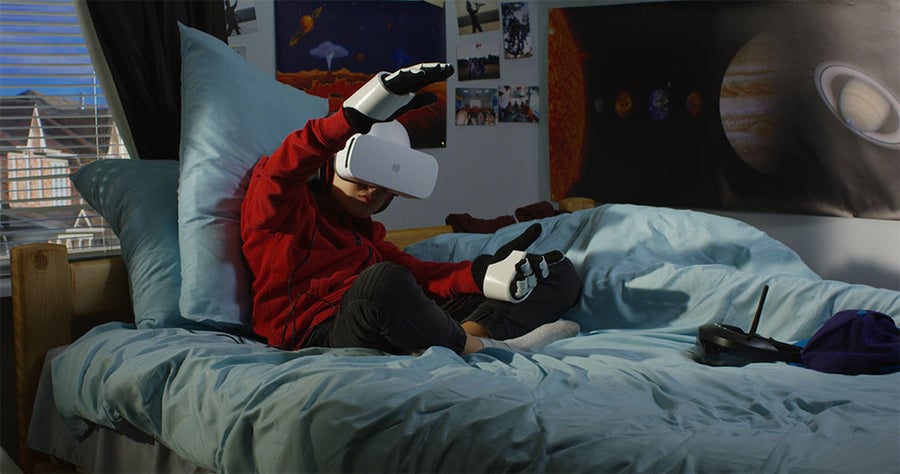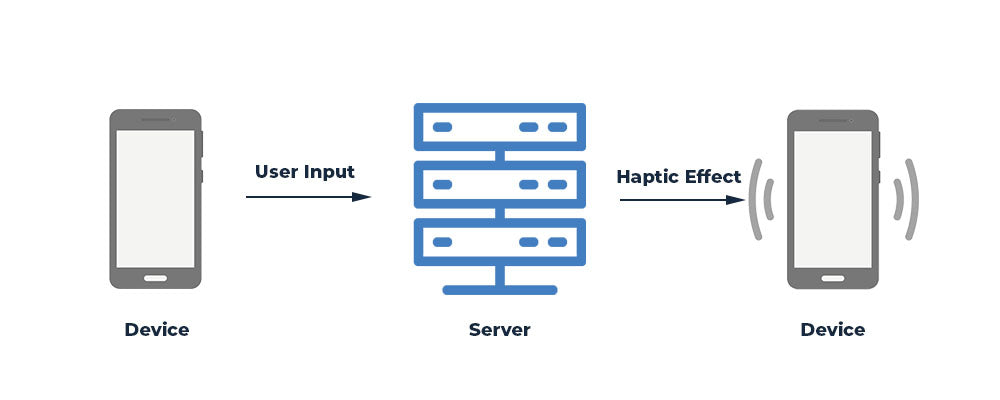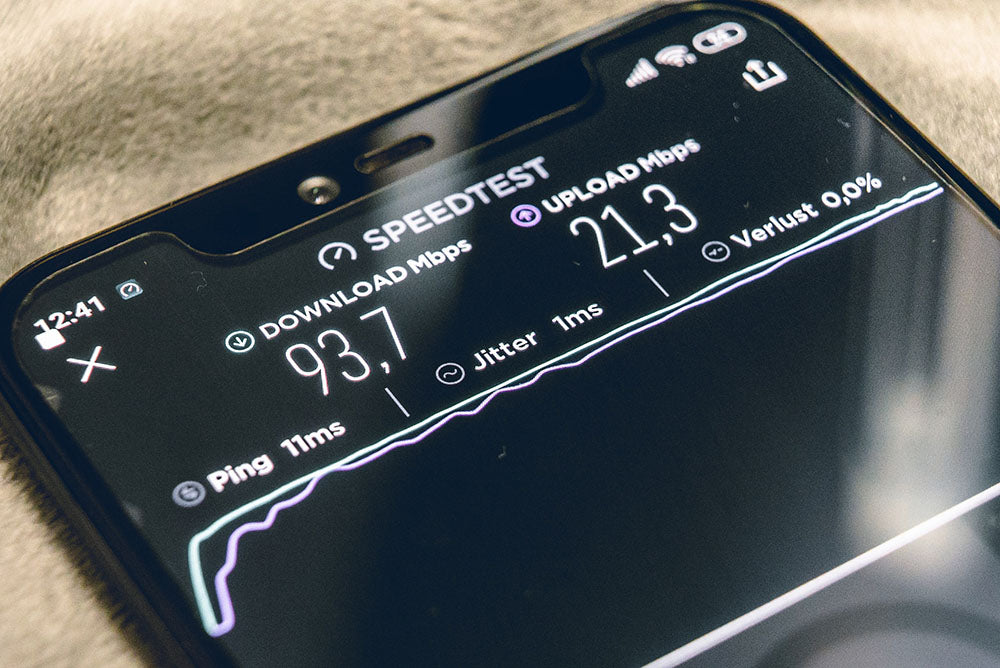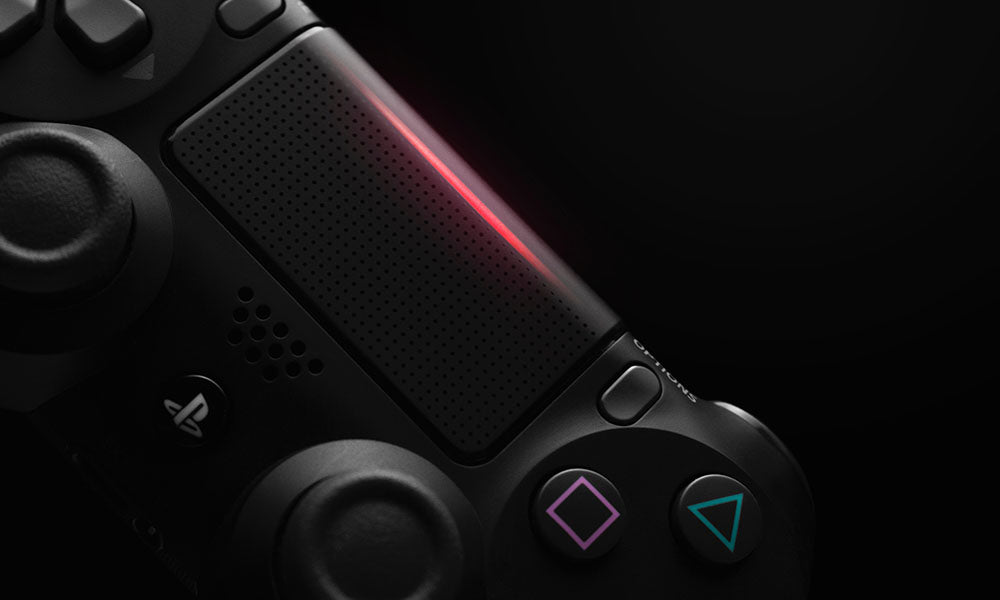
Internet is now in everything. It’s even used in many applications that weren’t an obvious fit a couple years ago: speakers, televisions, home appliances, cars, industrial machinery, etc. This phenomenon is called the Internet of Things (IoT). We covered this revolution and its impact on the industrial market in this blog article.
The IoT needs more performing telecommunication infrastructure to work at its optimal performance. That’s why the tech industry is making a very big deal with the new high-performing 5G networks. This new technology offers new heights of cellular network technology performance that will drive the capabilities of cloud-based application and use cases.
Better network infrastructure allows to increase the amount of data we share between devices. This data can be used to improve the interactions we have as humans with the different devices that surround us. We’re quite use now to stream audiovisual content on our devices. Video streaming services like YouTube and Netflix are very popular, so are music streaming services like Spotify and Apple Music.
What about the other senses? What if we could stream data to improve the tactile effects we experience on our electronic devices? This is exactly where new technologies are headed. The Tactile Internet is upon us and it will bring very advanced tactile effects to our devices!
What Is the Tactile Internet?

The easiest way to describe the tactile internet is to apply the same streaming principles from audio and visual content to haptics. All the tactile effect data (waveform, frequency, length, etc.) is hosted on a remote server. Thanks to the internet of things, you’re connected devices can access this data online and trigger more detailed haptics effects without wasting internal memory space.
Tactile Internet defines cloud-based haptic and tactile effects. It will allow devices to push to new heights the quality of haptic feedback we can experience with the devices that surround us. Improving the haptic feedback will have a major impact on how we interact with devices daily. The tactile internet goal is to create devices that can match the level of touch interaction humans have in their environment.
In order to do so, cloud-based haptic hardware performance needs to match the human’s reaction times. Therefore, we need better performing telecommunication networks. You probably already heard of 5G networks if you have a minimum of interest in technology. While many people believe that the average human being won’t really notice the difference in internet speed, the newly developed 5G networks do way more than increase the bandwidth of our internet connections. We’ll see why 5G networks are important for the tactile internet.
Why 5G plays an important role in the tactile internet?

Haptics technologies are different than audio and visual technologies. They are time sensitive and requires continual bidirectional data sharing. A few seconds of delay won’t break the experience on a visual stream service. If your video starts playing 5 seconds later just means you'll have to wait a little bit more, but the same delay would be disastrous for haptic feedback. You want the tactile feedback to trigger immediately when you press on a button, not 5 seconds later for example. That’s why we need better performing internet connections, hence the need for 5G telecommunication networks.
Low latency, high availability, reliability and security from the 5G networks allow the possibility to create haptic cloud structures. Haptic feedback quality relies on low latency and fast start-up time to create rich and detailed tactile effects. You need the fastest network available, but it isn’t just about pure internet speed. You need to consider the hardware latency time as well. 5G networks are able to have a latency time of under 2 milliseconds and can share data faster than what is possible with current network technologies.
There’s another reason why it’s important for haptics. Tactile effects are often triggered by the user’s action. This means that once the user input is recorded by the device, it must be sent to the remote server to be processed. Then the server can send the tactile effects data to the device. The relation is bidirectional. Latency time can easily add up in both ways!
Applications for the Tactile Internet
Now the fun part! What will the tactile internet will look like in real-life use cases? Let’s see how cloud-based haptics can have a major impact on different futuristic applications.
Gaming, Virtual and Augmented Reality

This one’s fun because it’s already happening! Have you heard about cloud-based console-less gaming service Google Stadia and Microsoft Project Xcloud? Those services offer the possibility of playing intensive video games without a console. All the calculations from the console’s CPU and GPU are made remotely on a very powerful server. The input from the player’s game controller is sent to the server and in return, the server sends the image, the audio and, you guessed it, the haptic feedback! While the graphical details of gaming are improving every year, the game controllers still use basic and crude vibrations. Latency isn’t a huge deal breaker for current games, but this is one of the first true iterations of the tactile internet.
The same will eventually come to virtual and augmented reality. You can think of the movie Ready Player One to have a very good glimpse at what the VR and AR future holds.
Healthcare

Have you ever heard of telesurgery? This surgical system uses internet and robotic technologies to connect surgeons and patients. Doctors can now practice surgery on their patients remotely!
While the first remote surgery occurred in 2001, the improvement of network, video and haptic technologies will push the boundaries of what will be possible to achieve.
Why haptics technologies are important? Surgeons need to feel with extreme precision what they touch to perform surgery. Better haptics means faster, more detailed and crisper tactile feedback. Higher quality haptic feedback translates into better precision and security levels and higher surgery success rates.
eCommerce

How haptics can push things further?
Shopping online and see a shirt you love? What if you could feel the fabric of the shirt before buying it? This way you could know before seeing the shirt if you really like it. While texture reproduction sounds futuristic, new haptic technologies are being developed and we’re not far from this reality.
The tactile will play a major role in every eCommerce platform. The data to reproduce the exact texture the customer wants to feel will be on the website server and sent to your device with an internet connection. Every eCommerce website will be able to customize the user experience with high-quality haptic feedback.
Industrial, Robotics and Manufacturing

A major revolution is about to undergo in the industrial market thanks to the IoT. New technologies, like VR/AR and connected tools, will be used in the industrial market to improve the productivity of employees, decrease the training learning curve and improve safety in the work environment.
Haptics will play a major role for a simple reason; it adds another layer of information to the user without adding load to the already overburdened visual and audio senses.
We talked about this subject in another article about the Industry 4.0 revolution. It’s an interesting read if you want to learn more about the impacts of haptics in factories. You can read it here.
Need for High-Performing Haptic Technologies Like Piezoelectric Actuators
The tactile internet new use cases are limitless. With all this power at the tips of your fingers (literally!), wouldn’t be counterproductive to use limited haptic hardware technologies? While your device doesn’t have all the haptic effect data in its internal memory, like the waveform, the frequency and the length of the effects, it still needs to have high-performing hardware in order to create the physical vibration. This is where you need to be careful in the choice of haptic technology you’re going to use, because they offer different levels of performance.
There are three major haptic technologies currently available on the market: eccentric rotating mass (ERM), linear resonant actuators (LRA) and piezoelectric actuators. They all have their own strengths and weaknesses, but they certainly don’t reach the same levels of performance. Here’s what you can get out of those three technologies:
- ERM – Low-end vibration, low definition tactile effects. Cost Effective.
- LRA – Slightly better tactile effects than ERM due to faster start-up times and wider frequency. More expensive than ERM, less than Piezo
- Piezo – High-Definition tactile feedback with near-instantaneous start-up time and limitless frequency range. More expensive than ERM and LRA
To read more on that please take a look at our guides or those 3 blog articles:
Just like we can’t stream 4k video content on a cathode-ray-tube television, you can’t create detailed haptic feedback with limited hardware, even if the data stream contains the necessary information. Piezoelectric haptic technologies will shape the future of the Tactile Internet.


Leave a comment